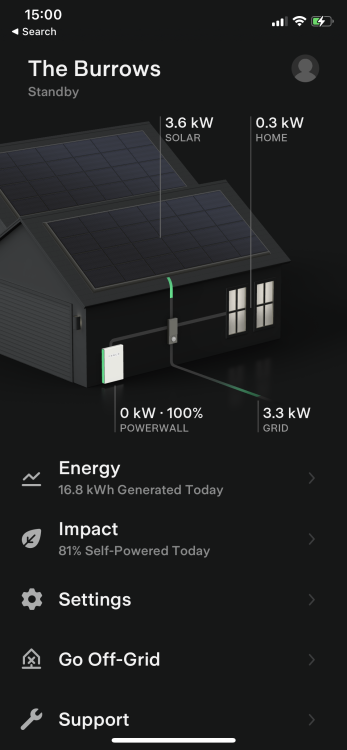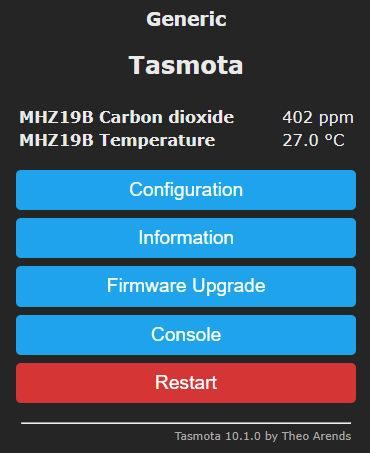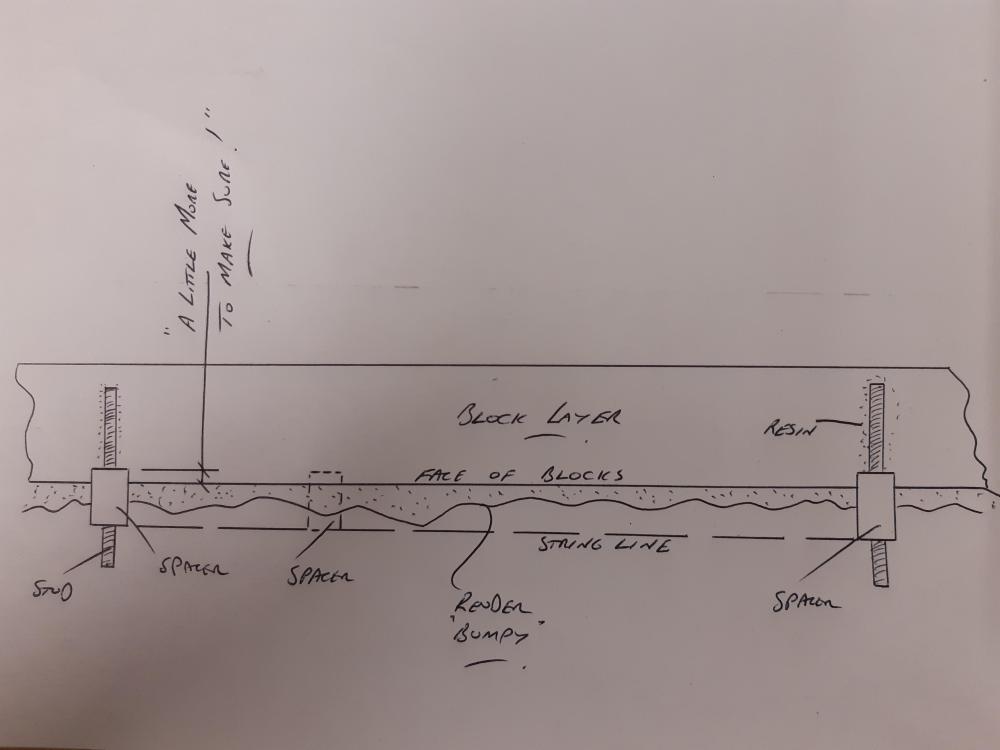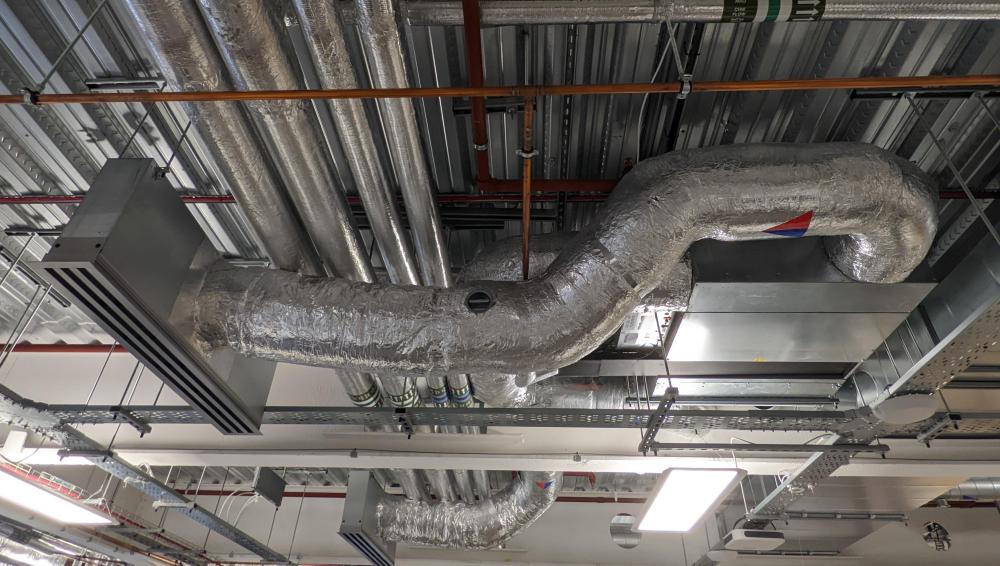Leaderboard
Popular Content
Showing content with the highest reputation on 07/01/22 in all areas
-
why does everything on this forum have to be about payback period? how about doing something not for financial gain/benefit but just because you want to? even if it was about payback then after 10 years @pocster is getting free electricity for the rest of the lifetime of the panels and batteries! sounds brilliant to me and if I get that I'd be very happy. but I didn't do my solar PV and batteries for any kind of payback but to reduce my reliance on the grid. but each to their own I guess. I know that not everyone is in the fortunate position to be able to afford to do stuff just because they want to or for another reason that isn't financial. anyway, @pocster is still the absolute b*llocks, as his signature reminds us.2 points
-
2 points
-
If the issue is voltage drop, then stopping the DNO's cable at the gate and running your cable from there, will not stop the volt drop. If anything it will increase it as your cable is likely to be smaller. I would go back to them to question the technical reason for this? Are they concerned Ze will exceed the maximum limit? If so the solution is not to shorten the run, but to increase the cable size they use. Can you post a plan of what they are proposing? there is usually a site plan showing what they connect and from where with the different size cables they are proposing.2 points
-
Two christmases have passed since I wrote the last entry here and we’re well into another year. The last few weeks have seen us discussing the possibility of another build and I decided to reread this blog in the hope of putting myself off the idea! The land next to us which has planning for 5 houses is beginning to move and the first house will be going up soon, I spent half an hour a couple of weeks ago chatting to the chap who’s going to be building and could feel the excitement brewing in me. We will have to make a move sometime in the next 3 years as retirement looms and this was never going to be our retirement home so who knows what will happen, I’m a great believer in fate and at the end of the day we never intended to build this house but the plot just fell into our hands. There’s no hurry but I just can’t see myself settling for a ready made house and the determination to finally build one that doesn’t give us any grief throughout the build is strong so watch this space!🙄😩1 point
-
Yes, after pondering this a while, I came up with the same unpleasant thought. I've probably been blanking it out because it's just too awful to contemplate. But like getting used to getting old - and all the unavoidable changes that brings, I think I'm beginning to get used to letting go all the certainties we once enjoyed about the cost of energy. A canny investor may well make a balanced judgment about the future and deploy their financial resources accordingly. Time for a second mortgage perhaps. Oh wait, I know Ohms law... 😉1 point
-
I don't believe I mocked you...well not about that anyway... 😉 PV, I'm sitting here thinking if I could I would. Then it progresses to can I afford not to? Some I guess take the peace of mind view. A big outlay on the face of it but a lot of satisfaction sticking it to the man and being reliant on nobody. That would be my philosophy I think.1 point
-
yeah, I get that battery storage is currently expensive but I still think it works, financially if you go for a more DIY type expandable solution rather than the PW2 or SE solution that @pocster has. I have gone down the LuxPower/Pylontech (although they're not actually Pylontech batteries but Pylontech are very commonly used it would seem) route. I was offered a 12.8kW system which was 4 x 3.2kW batteries and the Squirrel Pod inverter for £7102.50 + vat. sadly our budget didn't stretch that far as the current material prices has really made a dent in our build costs. so I scaled it back and got the Squirrel Pod and 2 x 3.2kW batteries for £4102.50 +VAT. I thought that was a reasonable cost for the system that 'should' help me store daily produced electricity for use at night. if I fully filled and emptied daily I'd be looking at saving £700 a year @ 30p/kWh and if I manage to claim the VAT back I am looking at approx. 6 year payback time. if I'd gone for the bigger array at the off then I'd be looking at a 5 year payback period. that's just fine as far as I'm concerned. so after 6 years and assuming no hardware failure or replacement I will be getting free electricity produced by my PV array for use overnight. and once the build is finished and I have disposable income again I can easily add extra batteries to increase the capacity of the system, or add a second squirrel pod to increase the discharge rate to up to 7kW. yeah, it was a big outlay and I'd have liked to get a bigger capacity from the off but I'm ok with it and it'll help me for now. if you want information on the Squirrel Pod you can check it out at https://www.infinityinnovations.co.uk/?product_type=lux-power all of the above is caveated with the fact that I haven't actually installed the system yet and am quite a way from finishing our house. so I'm actually hoping that it all works out well in the end. 😉1 point
-
I get it that people's situations do differ and I apologise if I came across a bit aggressive! it wasn't meant that way. I guess you can think of Solar PV as paying for your electricity up front. so even though it's a big outlay initially, after 10 years (and some solar panels offer 25-30yr guarantee iirc) you're basically getting the electricity for free. it seems like a no-brainer to me IF you're planning on staying in the property for that length of time. if it's a build and sell job then probably not worth it as you won't recoup the costs on the sale price but that could all change as the price of electricity rises and solar panels then become a massive selling point.1 point
-
I was genuinely trying to see if there's something I was missing that might be relevant to my own financial situation - which is one where payback is of paramount importance. I'm not criticising anyone or anything. I do however know that I have a considerable capacity to overlook the bleedin' obvious at times!1 point
-
Believe me I don't want to go raining on anyone's parade but I sincerely wish I understood the economics of battery storage in today's market. 10kWh of leccy for £12K? £3's worth. OK, so absolute best case brim it with solar and displace the grid when the sun ain't shining, every day of the year and 10 years later @30p/kWh. you break even. Possibly a more attractive 6 1/2 years @50p/kWh. If it goes even higher than that there will be many other things to worry about. But, I mean, best case... P.S.@pocster 'raining on anyone's parade' is not meant to be any kind of euphemism in this context 😂1 point
-
CO2 Is also a good option I've not seen mentioned. Especially in a smallish room. They used to be very expensive but an IR one like this is similar in price to the microwave sensor. RS232 output and plenty of Rpi and Arduino libraries - although I use one with an ESP8266 running Tasmota to get MQTT from it...1 point
-
1 point
-
1 point
-
Sorry, missed this earlier. Seems reasonable production. Flat roof systems do perform quite well when cloudy (scattered light). Did you take into account some slope to allow water to wash dirt off?1 point
-
Read that too thanks. Sort of puts the mockers on netting the whole plot off! I'm going to try an artist's brush to knock them off then a few drops of peppermint essential oil in a plant sprayer full of water.1 point
-
1 point
-
No. Our blinds are constructed of a fine black mesh that are only down when the sun is trying to get in, i.e. when it’s bright outside. Whilst they do reduce the amount of light entering the room it is almost unnoticeable. From the inside looking out it can be hard to see that they are down and they are very effective at preventing overheating.1 point
-
There may come a time of grid shortages when we are grateful for any power. I'd rather have PV than not for a bit of security. How much is that worth?1 point
-
Is that at the level of the DPC? I'm wondering if rainwater is getting into the wall higher up and running down inside the cavity before emerging through the bricks at the DPC level? If that's possible check to see how the water is getting in higher up and fix that. Then when the wall is drier try brushing off the efflorescence with a stiff broom. Avoid wire brushes as they can scratch up the brick.1 point
-
You will easily get 25mm through duct.25 Practically every external circuit outside the domestic environment is installed in duct, 50mm, 100mm and 150mm being the most common. 95mm cable in a 100mm duct, no issue. How far is your run? Residential laterals I tend to design in 25mm up to about 35m then 35mm after that. DNO will use split concentric cable which is rated slightly higher than xlpe swa.1 point
-
Ran 45m of 25mm from new build to old bungalow, 80A switched fuse in the meter box. No complaints from the electrician. I did feed it through the ducting 60mm ish I think before burying it though. When Western power came in to move the supply the main supply went through 100mm ducting that I laid for them quite easy, I left a nice thick piece of rope in there though.1 point
-
i presume that the worry is voltage drop?? do you have an official quitation for a supply showing cable route and cost??, when my mum had her electricity supply converted from overhead to underground then she had an official quote from SSE done from plans which showed the proposed cable route, when the guys came to site then they realised that the cable route was too long for the voltage drop of the cable that they were going to use and had quoted for, to counter this they had to install a larger cable from the pole to almost all the way into the house then jointed a smalled diameter cable into the house to the new cutout fuse, this additional cost was not passed onto my mum as it was SSE who had made the mistake in the calculations1 point
-
Are you saying that the worktop is 60mm thick. 40mm would be more common. If your cab has a solid top you should have cut a hole larger than the sink so that the clips would be onto the underside of the worktop.1 point
-
Should be 50mm up to protect it from screws. One hole in that location is not going to affect anything. But it is good practice to put it central of the joist.1 point
-
My PV cost me £1500 4 years ago with some diligent buying and all DIY install. The savings have paid 2/3 of the cost already and with the higher prices now it won't be long before the savings have paid for it and it is then just a constant saving. I am managing to self use almost all I generate, so don't believe batteries make sense yet for a normal 4kW system but probably do for a larger system where it would be hard to self use it real time. I will probably look at a second off grid battery PV system on the roof of the car port when I get around to building that.1 point
-
I had this mindset a year ago, I wish I hadn't as it definitely is worthwhile and much quicker payback than you think.1 point
-
Don’t use drain chemicals they burn the rubber seals on joints and seen it melting pipes several times in the past, also if you get a splash back it will burn through burn into skin through clothing. Have 20 years experience running my own cleaning clearing and repair business just hate the stuff should be banned from selling the stuff.1 point
-
It’s quite complicated to do it as the inverter normally needs to “see” the mains to get its phase signal so using a switching isolator to dump to the immersion first without going via the CU will be problematic. What may be more use is twin immersions - set the top higher than the bottom and use the bottom as secondary dump load. That way you’re only heating a smaller part of the tank but it’s the “useful” part unless you’ve run a bath and drained the tank. It’s also usually above the boiler thermostat so won’t let the boiler trigger if small amounts of water are drawn off.1 point
-
It will all depend on how good you are. If your constantly reaching for the level and checking and tap tap tapping on the wall your not going to earn much. Will also depend if you have help to stack the blocks and mix the mortar. Walls with loads of openings, doors and windows, will be a lot slower. There will be days where it will look like you haven't done a thing other than build corners and set out inside walls and other days the walls fly up.1 point
-
@SuperPav, Mesh selection is really a choice for your SE or whoever did your slab design and it is driven by that. Using the mesh as a placement framework for the UFH piping is really a secondary bonus and shouldn't impact on mesh selection. As to slab heating, there are broadly two strategies at the extreme: Dump heat into the slab at a steady rate so that the slab remains at a slight Δt above room temp. Here it will radiate ~ 7 ×Δt × A W into the interior. If this matches the net heat loss of the house, then your house will stay at the set temperature. Calculate your total kWh house losses for the coming day, and for a given input heating rate this give a total heating time. Just dump this into the slab in one or more "chunks", and accept that this will result in a slight ripple (say under 1°C) on your internal temperature. We have a passive house and have adopted the latter as this was easier to implement, in terms of kit required, ease of control, and simplicity leading to maintenance risks and reduction. The thermal dynamics here is a different Q entirely and one where I feel more qualified to answer on. I did my slab design back in 2015, and I was one of the first ones on this forum to go with a UFH solution which went against the prevailing wisdom of including a buffer tank. I decided to use a 3 kW Willis heater to heat the slab directly and use it as the thermal store for the heat. I needed to do some modelling of the slab for me to be comfortable with this solution and to ensure that it's thermal performance during the heating cycle was well within sensible limits, before finalising on this implementation. Luckily my professional background give me some experience of doing this type of modelling, but the main challenge was one of producing a model of the correct simplicity yet enough detail for the exercise to be meaningful. I have previously documented this in my blog posts and and specifically in my thread, Modelling the "Chunk" Heating of a Passive Slab written in late 2016. For the modelling, I didn't want to get into the complexities of CUDA compute engines and CFD libraries, so to keep the math and computation simple enough to be computable in Fortran on a single core (which is what I used back in the 1980s when I did this sort modelling for a living), I approximated the slab heated by one UFH loop as a (radially symmetric) concrete pipe some 0.120m in diameter and 100m long with a 15mm heating pipe running down its centre and with water circulating through it and heated by a 1 kW element before return. This allowed me to use a simple radial approximation for the Fourier heat equation and to solve over time for the (r, l, t) coordinates over time and the length of the pipe. (See this post for more details.) OK, it's a model and an approximate one at that because the actual heat flow through the pipe is not radially symmetric as the area around the heating pipe is insulated below, radiating to the air above, and adjacent to another. Even so, this did allow me to investigate the overall varying heating characteristics over time and both along and across the concrete. This was good enough to confirm that a "Willis direct into slab" approach would work fine for me. I subsequently instrumented the actual implementation with lots of DS18B20 digital thermometers which have been continuously logging now for ~5 years, and the slab behaves as predicted. This can be summarised by more simple and intuitive approximation. The slab surrounding a single pipe heating loop can be thought of a (folded) long box of concrete that is insulated below, radiating to the air above and with similar boxes on either side (since these are being heated by a return run at a similar flow temperature). The UFH pipe flow is dumps ~1kW (in my case) heat along the centre of this long box, and so the water cools as it flows along the pipe. The overall Δt is largely dictated by the water flow rate which in turn depends on the pump head, flow resistance, etc. In my case this was the biggest difference between the model and actual implementation, as I went with a slower flow rate than my modelled 1 m/s, in order to keep the circulation noise to a minimum. (The UFH is in a services cupboard off or G/F toilet and I don't like to hear the pump noise when I am taking a dump). So as the long "box" heats you get a standard radial heat flow curve where the circulating water in the middle is maybe 5°C hotter than the surface during heating period, with maybe a 2-3°C drop along the 100m run length. As the heat is dumped into the slab, it slowly but steadily heats up over the heating period, say by 5°C or so over a 7hr heating window. Certainly if you walk over the slab at the end of a heating cycle in bare feet (as we do), you can notice the 1-2 °C variation across the floor between the flow and return legs of the UFH runs and any gaps in UFH coverage. Pretty much as soon as the heating stops, the heat from the warm spots spreads so the feel becomes more uniform (as the heat only needs to flow ~50mm or so through the concrete). We heat our slab overnight, so by midnight the slab might be ½-1 °C below room temperature. In the morning after heating it might be 4°C above room temp, and it is now radiating ~28 W/m2 into the environment. This rate will fall during the day as the slab cools, leading (in our case) to a ~1°C ripple on the overall air temperature. The integrated heat dump from the slab must match the overall house losses, so the colder it is the more we need to heat the slab; and the warmer, the less. I hope this makes sense.1 point
-
Yes, you do. It certainly doesn't hurt, but I can't say I've found ours to be hugely effective. The main issue is that unless you run the MVHR on boost overnight (which is when it will generally be triggered), you don't actually exchange all that much of the cooler outside air for the warm air inside. You also use a lot more power on boost compared to the standard setting. As long as you don't have issues with noise or insects (or you have insect screens), opening windows is much more effective. If I were doing this again, I'd include concealed roll-down insect screens on all bedroom windows, and on at least a couple of downstairs windows that can be locked open a crack at the rear of the house, to take advantage of stack ventilation without being eaten alive by insects.1 point
-
0 points
-
0 points













.jpg.c21f3ac78c9b7efd90cbdcb312744dc5.thumb.jpg.7adcad4c0e384f5ecd7d56b0618df6e5.jpg)

